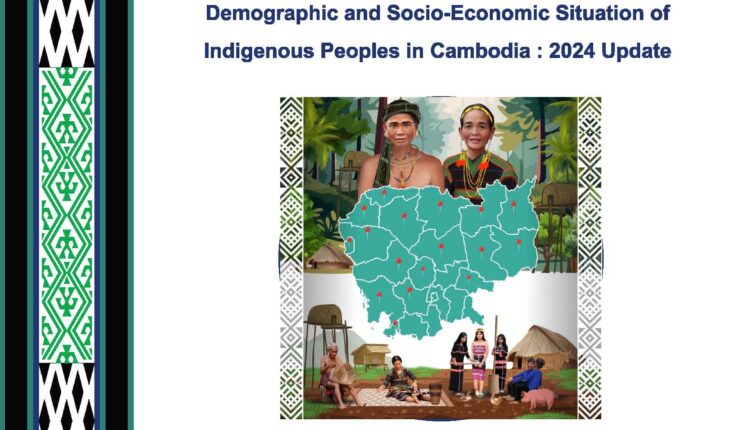National Report on Demographic and Socio-Economic Situation of Indigenous Poeples in Cambodia, Update 2024
- Version
- Download 151
- File Size 26.55 MB
- File Count 1
- Create Date December 11, 2024
- Last Updated December 11, 2024
The National Report on the Demographic and Socio-Economic Situation of Indigenous Peoples in Cambodia, updated in 2024 by the Ministry of Planning and the Cambodia Indigenous Peoples Alliance (CIPA), utilizes data from the 2019 national census. Its aim is to provide comprehensive insights into the lives of indigenous peoples, guiding planning and raising awareness among stakeholders and the public.
Indigenous Population Overview
Cambodia recognizes 27 Indigenous groups by name, though official records vary: 24 by the National Policy for Indigenous Development, 22 by the general population census, and 19 by the community database. Further research is necessary to refine these figures.
In 2019, the total indigenous population was 172,980, representing 1.11% of Cambodia's population. These communities predominantly reside in Ratanak Kiri, Mondul Kiri, Kratie, Preah Vihear, Stung Treng, and Kampong Thom. Six groups (Bunong, Tompoun, Jarai, Kreung, Kui, and Prao) make up 85.7% of this population.
Demographic Trends
Indigenous populations are notably younger, with a median age of 21 years, compared to Cambodia's median of 26 years. While the proportion of youth under 15 has declined from 41.7% (2008) to 34.8% (2019), working-age adults (15-59) have increased to 59.2%. Family sizes average 4.6 persons, with marriage occurring earlier than among other Cambodians—24 years for men and 20.6 for women. Fertility rates are declining but remain higher than the national average, especially among women with less education or economic opportunity.
Migration among indigenous peoples is limited (6%) compared to the general population (21.5%). Migration is often rural-to-rural, with motivations tied to family and employment. However, rural-to-urban migration is more prevalent among women than men.
Socio-Economic Conditions
Education: Educational outcomes for Indigenous communities have improved significantly. Literacy in Khmer increased from 34.3% in 2013 to 56.5% in 2019, with a narrowing gender gap. School attendance rose from 49% (2013) to 75.4% (2019) for children aged 6-13. Despite progress, Indigenous children face challenges such as lower attendance rates, grade delays, and dropout issues, particularly in rural areas. Most Indigenous adults have only primary education.
Labor Force: Indigenous labor force participation is higher than the national average, particularly among women. While unemployment rates are low (0.7%), many are self-employed (44%) or unpaid workers (49.3%). The majority (92.2%) work in agriculture, with limited representation in industry (1.7%) and services (6.1%).
Health and Hygiene: Health conditions show mixed results. Common illnesses include influenza, dengue fever, and typhoid. Access to healthcare facilities varies, with indigenous peoples frequently seeking private clinics or pharmacies. Hygiene remains a significant challenge—56% of households lack access to toilets, compared to 17.2% of Cambodian households. Clean water access has improved, though disparities persist between urban and rural areas.
Housing and Amenities: The vast majority (93%) of Indigenous households own homes, and improvements in electricity access are evident. By 2019, 31.3% of households used the state electricity grid, compared to 5% in 2008. Urban households also report better access to amenities such as televisions, refrigerators, and LPG for cooking.
Land Ownership and Community Rights
Efforts to secure indigenous land rights have advanced. By November 2024, 198 communities had received identification certificates, and 154 were registered as legal entities. Collective land titles cover 33,899 hectares, benefiting 3,235 families. However, the scope of land registration remains limited relative to the total number of communities.
Conclusion
While indigenous peoples in Cambodia have made strides in demographics, education, labor force participation, and access to amenities, they still lag behind national averages across socio-economic indicators. Persistent issues, including access to education, healthcare, sanitation, and land rights, underscore the need for targeted research and interventions to ensure equitable development and cultural preservation.
Download


